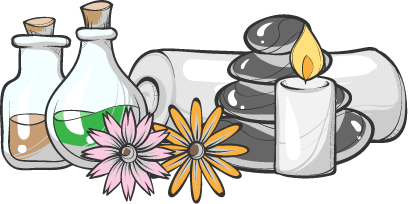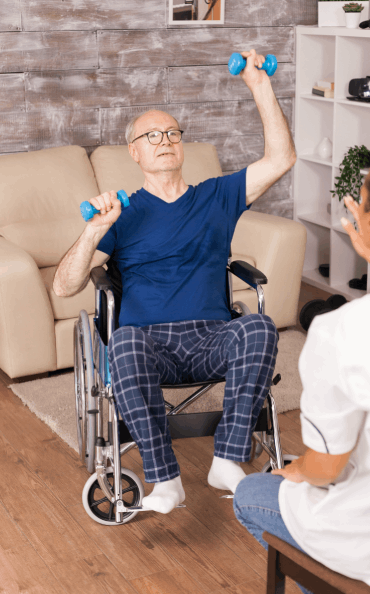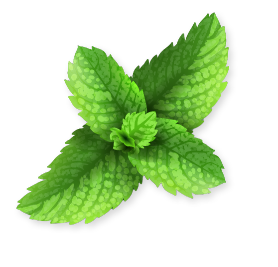AYURVEDIC TREATMENT FOR STROKE REHABILITATION IN KERALA
Ayurvedic treatment for stroke rehabilitation in Kerala combines Panchakarma, herbal medicine, and lifestyle changes. The therapy aims to detoxify the body, improve circulation, reduce inflammation, and restore balance. It’s personalized according to individual needs and is popular for its holistic approach and effectiveness in improving quality of life for stroke survivors.

WHAT IS STROKE REHABILITATION
Stroke rehabilitation is the process of assisting individuals in recovering strength, mobility, and independence following a stroke, which occurs due to disrupted blood flow to the brain, causing damage to brain cells. The goal of rehabilitation is to address stroke-related effects like weakness, paralysis, and speech difficulties. This may involve tailored physical therapy, occupational therapy, speech therapy, and other specialized interventions based on individual needs. The duration of rehabilitation varies depending on the stroke’s severity and progress made during the process.
SIGNS & SYMPTOMS OF STROKE
- Sudden numbness or weakness on one side
- Confusion or trouble speaking
- Difficulty seeing in one or both eyes
- Trouble walking, dizziness, or loss of balance
- Severe headache with no known cause

CAUSES OF STROKE
- High Blood Pressure (Hypertension):
Elevated blood pressure can damage blood vessels over time, increasing the risk of a stroke. - Atherosclerosis:
The buildup of plaque in arteries can lead to the narrowing or blockage of blood vessels, reducing blood flow to the brain. - Diabetes:
Diabetes is associated with an increased risk of stroke due to its impact on blood vessels and circulation. - Smoking:
Smoking damages blood vessels and increases the likelihood of blood clots, raising the risk of stroke. - Physical Inactivity:
Lack of regular exercise can contribute to other risk factors for stroke, such as obesity and high blood pressure.

TYPES OF STROKES
- Ischemic Stroke
- Hemorrhagic Stroke
- Transient Ischemic Attack (TIA)
- Cryptogenic Stroke
- Embolic Stroke of Undetermined Source (ESUS)
- Secondary Stroke
HOW AYURVEDA CAN TREAT
STROKE REHABILITATION
Ayurveda offers a holistic approach to stroke rehabilitation, aiming to rejuvenate brain cells, decrease cell death, enhance peripheral nervous system function, and alleviate muscle spasms. Utilizing therapies like Panchakarma for detoxification, Ayurveda reduces inflammation and improves blood circulation, aiding in the revitalization of brain cells. Herbal remedies, including Brahmi and Ashwagandha, contribute to inflammation reduction and support natural healing. Yoga and meditation mitigate stress, fostering overall physical and mental well-being. A personalized diet plan is designed to aid the body’s healing. Ayurvedic stroke rehabilitation comprehensively addresses both physical and mental effects, enhancing the quality of life for survivors.
FREQUENTLY ASKED
QUESTIONS
What does stroke rehabilitation do?
Stroke rehabilitation in Ayurveda focuses on holistic healing and rejuvenation of the body and mind. Ayurvedic treatment for stroke rehabilitation involves a personalized approach to address the unique needs and symptoms of each patient.
Ayurvedic therapies like Panchakarma detoxify the body, improve blood circulation, and reduce inflammation, which can help rejuvenate brain cells and improve their functioning. Herbal medicines, such as Brahmi and Ashwagandha, can also reduce inflammation, improve blood circulation, and support the body’s natural healing processes. Yoga and meditation can help reduce stress and improve overall physical and mental health, while a customized diet plan can support the body’s healing and recovery.
Ayurvedic stroke rehabilitation also involves Ayurvedic massages, like Abhyanga, which involves the use of herbal oils to promote circulation and rejuvenation of the body. Nasyam, a nasal treatment, is another Ayurvedic therapy that can help treat the neurological symptoms of stroke.
Ayurveda also emphasizes the importance of emotional and mental wellbeing in stroke rehabilitation. Ayurvedic therapies like Shirodhara, which involves the pouring of warm oil over the forehead, can help reduce stress and promote relaxation.
Overall, Ayurvedic stroke rehabilitation aims to address the physical, emotional, and mental aspects of stroke recovery. By supporting the body’s natural healing processes and promoting overall wellbeing, Ayurveda can help stroke survivors regain their independence and improve their quality of life.
What medical complications are often seen in stroke rehabilitation?
Medical complications are common in stroke rehabilitation due to the physical and neurological effects of a stroke. Some of the complications that may arise during stroke rehabilitation include:
1. Muscle weakness and spasticity – Stroke can cause muscle weakness and spasticity, which can lead to contractures, or abnormal shortening of muscles. This can make it difficult to move and perform daily activities.
2. Difficulty swallowing – Dysphagia, or difficulty swallowing, is a common complication of stroke. It can lead to malnutrition, dehydration, and aspiration pneumonia.
3. Cognitive impairment – Stroke can cause cognitive impairment, such as difficulty with memory, attention, and problem-solving.
4. Depression and anxiety – Stroke survivors may experience depression and anxiety due to the physical and emotional changes caused by stroke.
5. Fatigue – Fatigue is a common symptom of stroke, which can impact a patient’s ability to participate in rehabilitation activities.
6. Urinary incontinence – Stroke can also cause urinary incontinence, which can be distressing for patients.
7. Pressure ulcers – Patients with limited mobility may be at risk of developing pressure ulcers due to prolonged pressure on certain areas of the body.
These medical complications require careful management and treatment to prevent further complications and improve the patient’s quality of life during stroke rehabilitation.
How long does it take to recover from a stroke?
The recovery period for a stroke can vary widely depending on the severity of the stroke, the age and overall health of the patient, and the extent of rehabilitation. In some cases, patients may see significant improvements in just a few weeks, while others may require months or even years to regain their independence and quality of life.
The first few weeks after a stroke are often critical for recovery, as this is when most of the improvement takes place. During this time, patients may undergo intensive rehabilitation therapy to improve their strength, balance, coordination, and other motor skills. After this initial period, recovery may continue at a slower pace, but with continued therapy and support, many patients are able to make significant improvements in their daily functioning.
In general, it is important for stroke survivors to continue with rehabilitation therapy for as long as possible to achieve the best possible outcomes. Even patients who have reached a plateau in their recovery can continue to benefit from ongoing therapy and support. It is also important for stroke survivors to work closely with their healthcare providers to manage any medical complications that may arise, such as muscle weakness, spasticity, or depression.
Overall, stroke recovery is a complex and ongoing process that requires patience, persistence, and a comprehensive approach to rehabilitation and care.
What happens after my stroke rehabilitation?
After completing stroke rehabilitation, patients can expect to return to their normal activities as much as possible, but may need to make certain adjustments to their lifestyle and daily routine. Here are some common things that happen after stroke rehabilitation:
1. Follow-up appointments – Patients will need to continue to see their healthcare provider regularly for follow-up appointments and ongoing management of their stroke risk factors.
2. Medications – Many stroke survivors may need to continue taking medications to manage blood pressure, cholesterol, and other health conditions.
3. Lifestyle changes – Patients may need to make changes to their diet, exercise routine, and other lifestyle habits to prevent future strokes.
4. Support groups – Many patients find it helpful to join support groups or attend therapy sessions to help cope with the emotional and psychological effects of a stroke.
5. Returning to work – Depending on the severity of the stroke and the type of work, patients may be able to return to work with accommodations or adjustments.
6. Continued rehabilitation – Some patients may continue with outpatient rehabilitation therapy to maintain their progress and continue to improve their functioning.
Overall, after stroke rehabilitation, patients should work closely with their healthcare providers to manage their health and make any necessary adjustments to their daily routine to prevent future strokes and maintain their quality of life.
How long does stroke rehabilitation last?
The duration of stroke rehabilitation in Ayurveda can vary depending on the individual patient’s condition, the severity of the stroke, and the treatment approach used. In general, Ayurvedic stroke rehabilitation may last for several weeks or even months, depending on the patient’s progress.
Ayurvedic stroke rehabilitation typically involves a combination of therapies, including herbal medicines, massage, yoga, and dietary changes. Patients may also undergo Panchakarma, a traditional Ayurvedic detoxification process that can help improve circulation and reduce inflammation in the body.
The focus of Ayurvedic stroke rehabilitation is on rejuvenating the brain cells, reducing inflammation, and improving the functioning of the peripheral nervous system. The goal is to help patients regain their independence and quality of life by improving their physical, mental, and emotional well-being.
Overall, the duration of Ayurvedic stroke rehabilitation will depend on the individual patient’s progress and response to treatment. It is important for patients to work closely with their Ayurvedic practitioner to develop a comprehensive treatment plan and to monitor their progress throughout the rehabilitation process. With consistent and dedicated effort, many patients can make significant improvements in their physical and mental functioning following a stroke.
BOOK APPOINTMENT
























